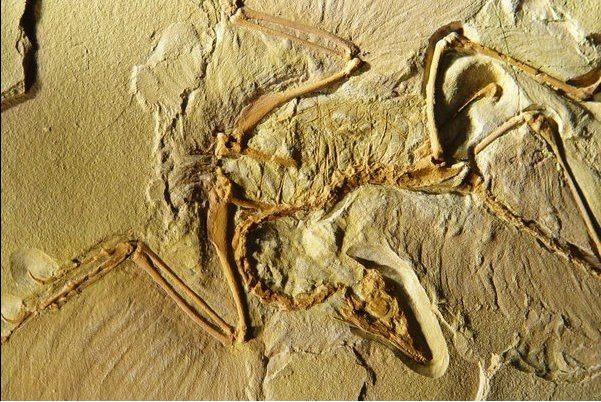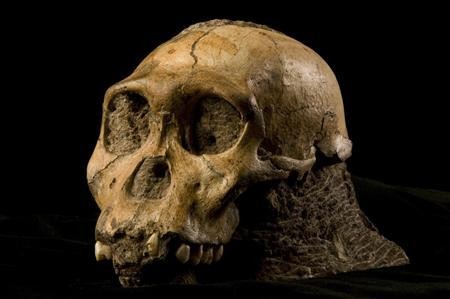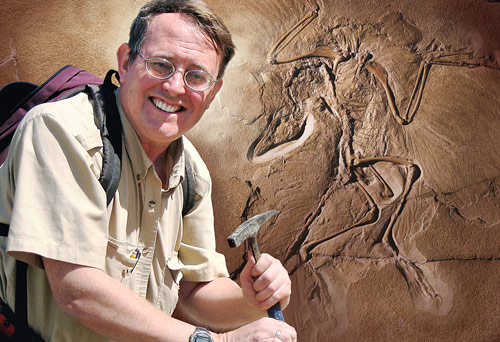Review: What the Fossils Say and Why It Matters

“Evolution is happening all around us. It happens every time a new germ invades your body, a new pest or weed destroys our crops, or a new insecticide-resistant fly or mosquito bites you. Creationists may get some personal comfort from their beliefs, but they cannot change the fact that life is evolving all around us and threatens our survival if we don’t come to terms with that evolution.” (p. 118)
If the most profound truths are destined for the most polarizing receptions, then Darwin’s ideas surely clinch the heavyweight title. From an empirical vantage point, the passage of time has been exceptionally kind to the iconic naturalist, even if scrupulously supported science is a poor solvent for cemented dogma. In some parts of the world, the mere mention of evolution can still elicit a range of reactions, from deep-seated animosity to a spluttering defiance waged from behind the ramparts of a keyboard. And yet for others it is an embodiment of the heightened grandeur science can evoke.
One might think something so well established would not so thoroughly dichotomize public attitude, but this mystery is clarified by unboxing the countermovement’s religious underpinning. Evolution’s conflict with a literal exegesis of Genesis is not an insignificant problem for fundamentalists, who feel roused to stamp out this object of dissonance at every turn. In what has become de rigeur for many of these blocs, scientific perspectives are measured against the canons of church teaching rather than the other way around. Adaptation is selected by committee, not by nature. Combine this with man’s long-harbored fancies about our place in the cosmos and you have an idea ripe for naysaying.
Charles Darwin himself might have identified with such sentiments early in his career. Like many of his contemporaries, he found little reason to doubt the literal truth of the Bible, having been raised in an Anglican family under the Church of England, the state-established Christian institution in Britain. By all tradition and probability, Darwin seemed destined to pursue a life of piety and vicarage. But his gaze was set on loftier pursuits. At the hale and nimble age of twenty-two, Darwin accepted consignment to the HMS Beagle and embarked on the famed Pacific voyage that would forever imprint his thinking and shift his worldview.
His observations during this expedition were difficult to stomach initially. He noticed that animals on outlying oceanic islands like the Galápagos were nothing like those on the nearest mainland, and that the fossils left behind by extinct species shared a stronger resemblance to the local fauna than they did to continental fauna. From these initial whispers was spun a thesis for the ages: life on earth had adapted to the environment in which it found itself, with Nature the arbiter.
So conscious was Darwin of the weighty implications of his newfound understanding that he sat on the concept of natural selection (or “descent with modification,” as he preferred to call it) for more than twenty years before taking it public. Even absent the evidence that would best support his theory — the fossil record, still sparse at the time — and the field that would tie it all together — genetics — Darwin’s observations and insight were groundbreaking.
More than one hundred and fifty years later, his landmark ideas tend to provoke the same animus as in the 1860s. No amount of corroboration seems sufficient to dissipate its detractors; evolutionary science is still disputed and rejected by the bulk of religious America, in stark contrast with the rest of the developed world according to recent indicators. This is unfortunate, not just because it signals anti-intellectualism, but because biological evolution — our evolution — ranks among the most important discoveries in all of science. Its advent ushered in a far more intricate and, indeed, far less anthropocentric understanding of life over against the unquestioned orthodoxy of distinctly created “kinds.”
While there may always be holdouts who drum up controversy in a bid to undermine the science, there is no such controversy within the scientific community. Evolution: What the Fossils Say and Why It Matters, from reputable paleontologist of 30 years, Donald Prothero, illuminates both sides of this longstanding narrative. With his expertise in fossils and other inter-applicable disciplines, Prothero enlightens his readers on why evolution by natural selection is part of the furniture of reality and shoots down the biblically motivated dismissals of creationists who deny this reality.
First Things First
Before establishing the positive case for common descent, Prothero first targets the religious engines which fuel its nonacceptance, allocating considerable space to biblical origins and context. I cannot commend this approach enough. All of the evidence in the world is not enough to sway fortified religious mindsets. The ballast of fundamentalism must first be kicked aside.
The forays into biblical interpretation are admirable and strike at the heart of creationism. Entire sections are devoted to precursory creation and flood myths, such as those of the Sumerians and Babylonians, the Documentary Hypothesis, and debunking “flood geology.” As Prothero tells us, “The Bible is a composite of multiple sources that did not always agree with each other.” (p. 30) It truly is refreshing to see a scientist as capable of dissecting the often thorny issues of religion as of science, even though his treatment here is unlikely to break new ground for those well-versed in biblical studies.
All roads lead back to America as the birthplace of modern creationism — from its evangelical roots in the late 19th century and the many spouts of obstructionist fervor in the courtroom to the appearance of its more recent cognate, intelligent design (ID). While most of these efforts to gain academic traction have collapsed in failure, there is a rich history to be told here of the rhapsodic and fitful yet ongoing quarrel over the legality of teaching creationist perspectives in public school systems around the country.1
Prothero recounts in places his own debates with creationists and the predictable tactics they employ to evade the portfolio of evidence unearthed by the scientific community. With devastating effectiveness, Prothero yanks the rug out from creationist and ID peddlers and pinpoints the errors in their tattered objections.
Fossils Tell the Story
In reconstructing the evolutionary history of life, scientists look to the strongest clues available: those written in the earth itself. As one of the most accomplished paleontologists of his generation, Prothero is in rare form with his dizzying knowledge of the fossil record. Unfortunately for scientists like Prothero, the discovery of a fossil is actually an overwhelmingly improbable event due to the unforgiving processes of fossilization and deposition, combined with the fact that few scientists are out there hunting for them. Indeed, a fossil record as robust as what we have today is a story in and of itself. He walks us through example after example of evolutionary sequences, highlighting transitional forms along the way as well as each taxon’s overall place in the topiary of life.
Our guided tour commences with the smallest of life on earth, the microbial forms of bacteria and protists whose relatively rapid evolution makes for an impressive array of microfossils. We next work our way up to invertebrates, and onto fish, and then proceed to the nonamniote tetrapods (what the rest of us might call amphibians). Next Prothero discusses the selection pressures giving rise to land-based animals’ return to the sea and the reptilian’s branching evolutionary tree leading to the dinosaurs and, later, birds. Priority then shifts to the mammals. Horse, rhino, pinniped (seals, sea lions, and walruses) and whale evolution are among the most remarkable examples in science of later observation confirming prediction.2
The book concludes with a recap of our own origins. Some 6,000 hominid fossils have been located to date, and biologists have made significant progress in piecing together the complete canvas of human evolution. The various collections preserved by museums around the world document our ancestry in near-cinematic form. Upon Prothero’s first visit to the natural history museum in Kenya, he reminisces, “A tour through the bomb-proof hominid vault in the Kenya National Museum in Nairobi is a revelation: a whole room full of fossils that document our evolution, and whose existence the creationists must deny.” (p. 336)
Of all the threads of evidence buttressing Darwin’s original insight, the fossil record qualifies as perhaps the most irrefutable testament to the temporal progression from simpler to more complex organisms. The variety presented here reaches a scale and lucidity few other works can match. While Prothero marshals independent corroboration from other disciplines, including embryology, vestigiality, comparative genomics, and biogeography, the punch line of the book is the none too shabby fossil record, which only grows more exhaustive with each passing year.
On a somewhat pickier note, I do wish Prothero had mentioned one of the primary objections to fossil science: the reconstruction of a full specimen from a small number of bones. As paleontologists will emphasize, you do not need a complete set of bones to extrapolate with accuracy a full skeleton. For example, the human body is comprised of 206 bones, but many of them are redundant. If the left tibia bone is intact, the right tibia is unnecessary. Once you account for all the duplicate bones, you’re left with around 120 unique fragments. Certain bones, moreover, constitute defining features for certain genera, relegating others to a lower priority. This is important because rarely is a full set found in the wild.
Slaying the Slain
If a knock can be made against the book, it is Prothero’s relentless captivation with creationists, especially Duane Gish, whom Prothero has debated multiple times in public. In fact certain portions of the book seem almost entirely addressed to a creationist — a boxing match that never seems to let up. At some point it began to feel a bit repetitive, and could potentially turn off the very readers he’s trying to reach. I get it, though: he’s spent much of his life wrangling with creationists; it’s only inevitable this would manifest on the page.
Closing Thoughts
After the last page had been turned, I couldn’t help but feel once more a sense of awe at the diversity of life that has roamed this planet and the time-tested principles that account for it. I find endlessly perplexing the fundamentalist’s continued preoccupation with ancient creation stories when life’s evolutionary past is ever more breathtaking, ever more nuanced, and ever more surreal juxtaposed with the prosaic passages introducing the biblical texts. Prothero lays down an airtight case, premised on a voluminous amount of empirical evidence, for the truth of the former and against the fallaciousness of the latter. Part textbook, part creationist’s worst nightmare, Evolution: What the Fossils Say and Why It Matters is one of the most accessible resources on the topic I’ve had the pleasure of reading. It answered the most questions, and may well be the go-to reference for debunking pestersome creationists.
Note: This review is mirrored over at Goodreads and at Amazon.
Further reading:
- The Case Against Intelligent Design
- Why Evolution is True and Why Many People Still Don’t Believe It
- Kenneth Miller: Evolution, Why it Matters
- What is the Evidence for Evolution?
- Top 10 Myths About Evolution
- 15 Evolutionary Gems
- 29+ Evidences for Macroevolution
- Examples of transitional fossils
- Evidence of common descent
- Genetics provide powerful evidence of evolution
- Understanding Evolutionary Trees
- The fundamentalist practice of using the Bible as a litmus test for accepting scientific discoveries can be traced even further back to the 18th century, when James Hutton’s theory of uniformitarianism was met with sharp resistance in some quarters due to its conflict with Noah’s flood, to say nothing of its association with deep time and all of the weighty implications that entailed. “Flood geology,” as it’s been called, thus predated Darwinism, and set the stage for further conflict between science and Genesis.
Young Earth Creationism and “Bible science” came to the fore in large thanks to the pioneering work of Ellen White, a Seventh Day Adventist thought leader who inspired George McCready Price to write The New Geology (1923). Though the book was quickly disowned by geologists, it gained a following thanks to the 1925 Scopes Trial when William Jennings Bryan picked up many of Price’s arguments. Then came Henry Morris, a hydraulic engineer who revived Price’s ideas in the early 1960s with The Genesis Flood (1961), and started the Institute for Creation Research (ICR) in 1972. Morris and Whitcomb’s book has been largely credited for raising the profile of the creationist movement around the world.
[↩]
- Mammalian phylogeny is probably the most relatable and intriguing to non-scientists and lay readers, but there is only so much space one can dedicate to the fossil evidence while giving equal due to the rest of animal taxonomy. For those looking for a more in-depth rundown of mammal-specific evolution, I recommend picking up Prothero’s earlier work, Horns, Tusks, and Flippers: The Evolution of Hoofed Mammals.
[↩]




Comments